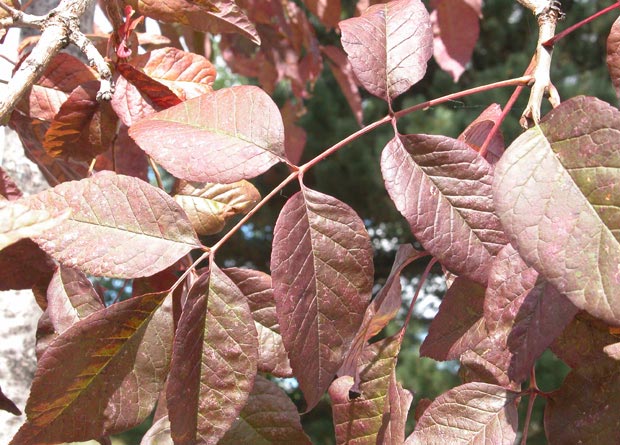The intricacies of a single leaf
Take a close look at this leaf. Which leaf? There's only one! This is a compound leaf. To the uninitiated, it looks like several leaves on the same branch, but botanically speaking, it is a compound leaf. The mini-leaves are actually leaflets; the tiny stalk and leaf stalks are really the rachis, one main leaf stalk and many smaller petiolules.
How can you tell whether you're looking at a simple leaf, with a leaf stalk on a twig, or a compound leaf with leaflets and petiolules? The bud provides the answer. The leaf stalk has a companion bud where it is attached to the branch; the petiolule, attached to the leaf stalk, does not. To see the difference, click on the Visual Aid button.

© Jardin botanique de Montréal (Lise Servant)
Early forest succession trees, which grow quickly, have compound leaves, which are more economical to produce than the equivalent in twigs and their leaves. And trees growing in climates with very dry summers benefit from having a rachis that loses less water than would twigs. Two different problems, one solution: compound leaves!




